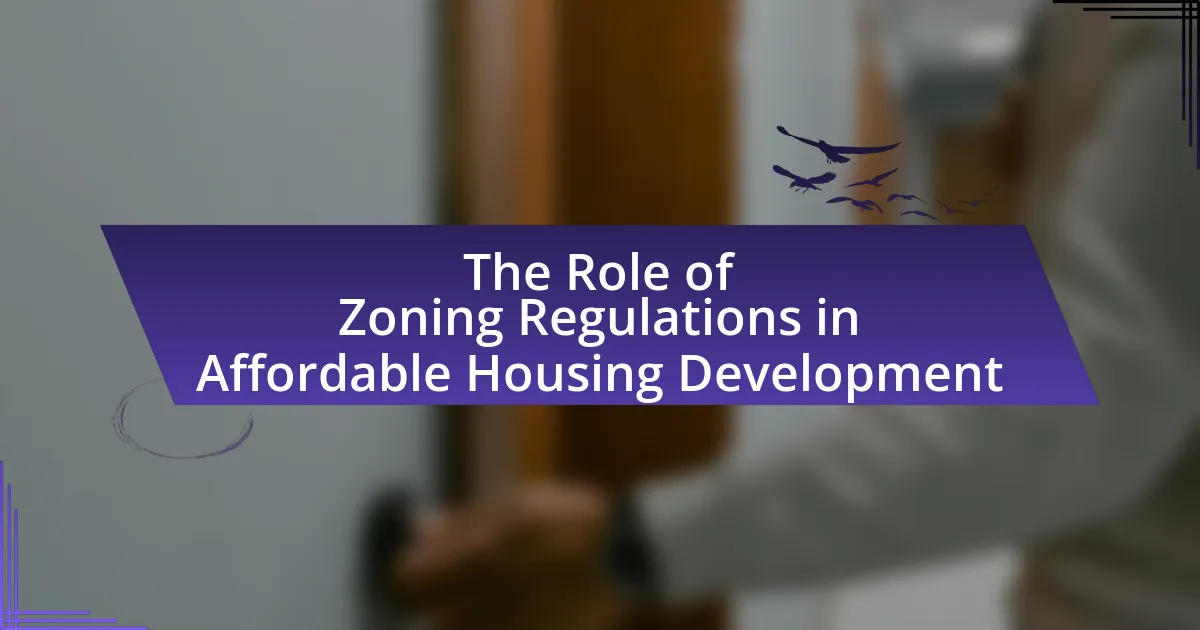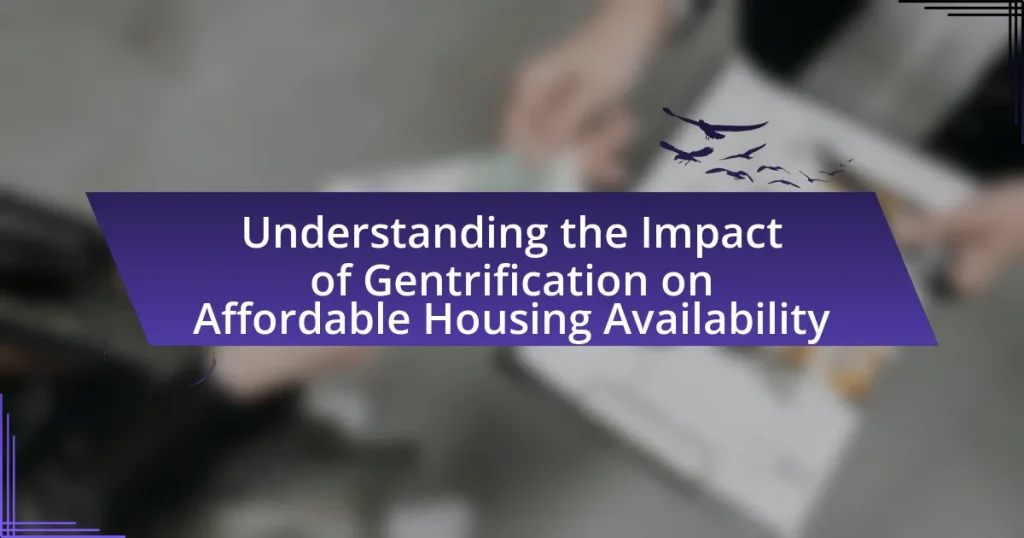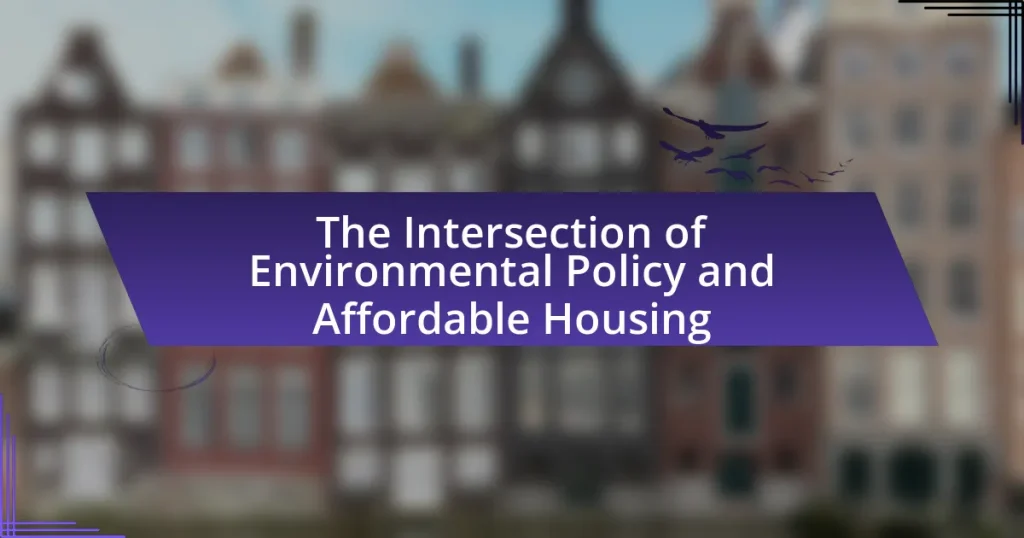Zoning regulations are local laws that govern land use, impacting the development of affordable housing by dictating building types, density, and land use compatibility. These regulations can facilitate or hinder affordable housing initiatives through practices such as inclusionary zoning and density bonuses, which promote the inclusion of affordable units in new developments. The article examines how zoning laws influence housing availability, address equity and access issues, and present challenges for affordable housing development. It also explores potential solutions and best practices for optimizing zoning regulations to enhance affordable housing opportunities in urban areas.
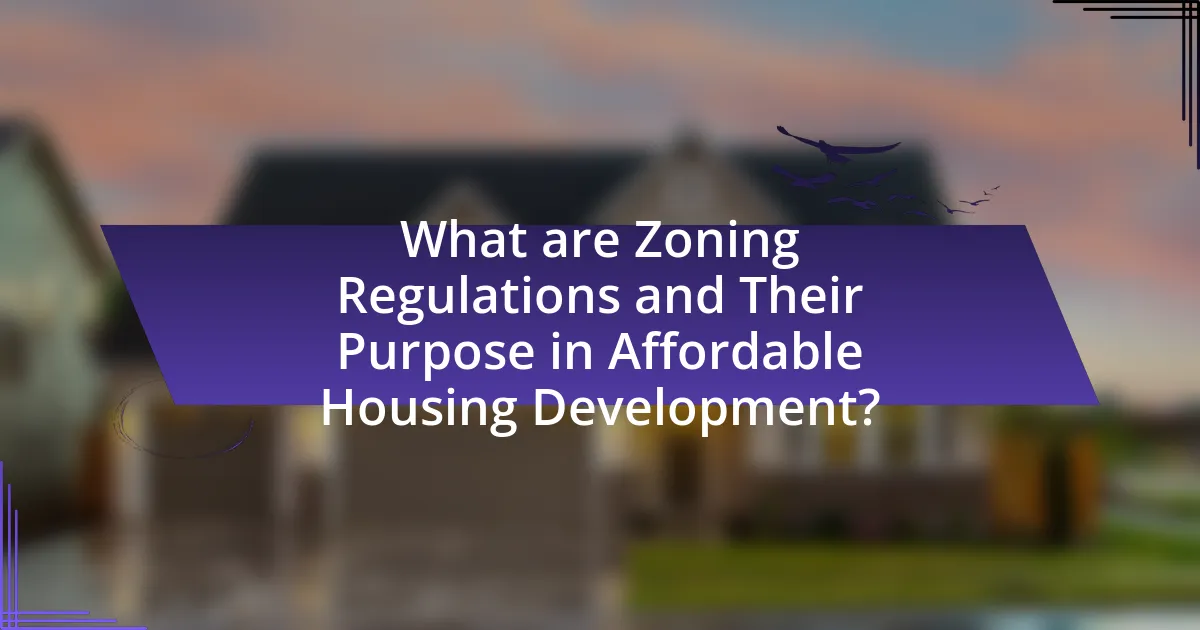
What are Zoning Regulations and Their Purpose in Affordable Housing Development?
Zoning regulations are laws established by local governments that dictate how land can be used in specific areas, including the types of buildings that can be constructed and their intended purposes. Their primary purpose in affordable housing development is to ensure that there is a sufficient supply of housing that meets the needs of low- and moderate-income residents while maintaining community standards and land use compatibility. For instance, zoning regulations can facilitate affordable housing by allowing higher density developments, mixed-use projects, or the inclusion of affordable units in new developments, which can help address housing shortages. According to the American Planning Association, effective zoning can promote diverse housing options and support community development goals, thereby enhancing access to affordable housing.
How do zoning regulations influence the availability of affordable housing?
Zoning regulations significantly influence the availability of affordable housing by dictating land use, density, and building types. These regulations can restrict the development of multi-family units or impose minimum lot sizes, which limits the number of affordable housing options available. For instance, a study by the National Multifamily Housing Council found that restrictive zoning laws contribute to a shortage of affordable housing, as they prevent developers from building higher-density housing that could accommodate more residents at lower costs. Additionally, zoning regulations often favor single-family homes over multi-family developments, exacerbating the affordability crisis in urban areas.
What specific zoning laws impact affordable housing projects?
Zoning laws that specifically impact affordable housing projects include inclusionary zoning, density bonuses, and minimum lot size regulations. Inclusionary zoning mandates that a percentage of new developments be set aside for affordable housing, directly influencing the availability of such units. Density bonuses allow developers to build more units than typically permitted in exchange for including affordable housing, thus incentivizing the creation of lower-cost options. Minimum lot size regulations can restrict the number of units that can be built, potentially limiting affordable housing supply in certain areas. These laws collectively shape the landscape of affordable housing by either facilitating or hindering development efforts.
How do zoning regulations affect land use and density?
Zoning regulations directly influence land use and density by establishing specific guidelines for how land can be developed and utilized. These regulations dictate the types of buildings allowed, their height, bulk, and the density of development, which in turn affects the availability of housing and commercial spaces. For example, areas zoned for high-density residential use can accommodate more housing units, thereby increasing the supply of affordable housing. Conversely, low-density zoning can restrict the number of units built, limiting housing availability and potentially driving up prices. Studies have shown that cities with more flexible zoning regulations tend to have higher rates of affordable housing development, demonstrating the critical role zoning plays in shaping land use and density outcomes.
Why are zoning regulations critical for urban planning and development?
Zoning regulations are critical for urban planning and development because they establish guidelines for land use, ensuring organized growth and sustainable communities. These regulations dictate the types of activities permitted in specific areas, which helps prevent conflicts between incompatible land uses, such as residential and industrial zones. For instance, according to the American Planning Association, effective zoning can enhance property values and promote economic development by creating a predictable environment for investment. Furthermore, zoning regulations can facilitate affordable housing development by allowing for higher density and mixed-use developments, which are essential in addressing housing shortages in urban areas.
What role do zoning regulations play in community development?
Zoning regulations play a crucial role in community development by dictating land use, density, and the types of structures that can be built in specific areas. These regulations help shape the physical and social environment of a community, influencing factors such as housing availability, economic growth, and public services. For instance, zoning can promote affordable housing by allowing higher density developments in designated areas, which can lead to increased housing supply and lower prices. Studies have shown that communities with flexible zoning regulations often experience more diverse housing options, which can enhance overall community resilience and inclusivity.
How do zoning regulations address issues of equity and access in housing?
Zoning regulations address issues of equity and access in housing by establishing land use policies that promote affordable housing development and prevent discriminatory practices. These regulations can include inclusionary zoning, which requires a percentage of new developments to be affordable for low- and moderate-income households, thereby increasing access to housing in diverse neighborhoods. Additionally, zoning laws can eliminate barriers such as minimum lot sizes and restrictive density requirements that disproportionately affect low-income communities. For instance, cities like San Francisco have implemented policies that allow for higher density housing in areas with high demand, which helps to alleviate housing shortages and promote equitable access.
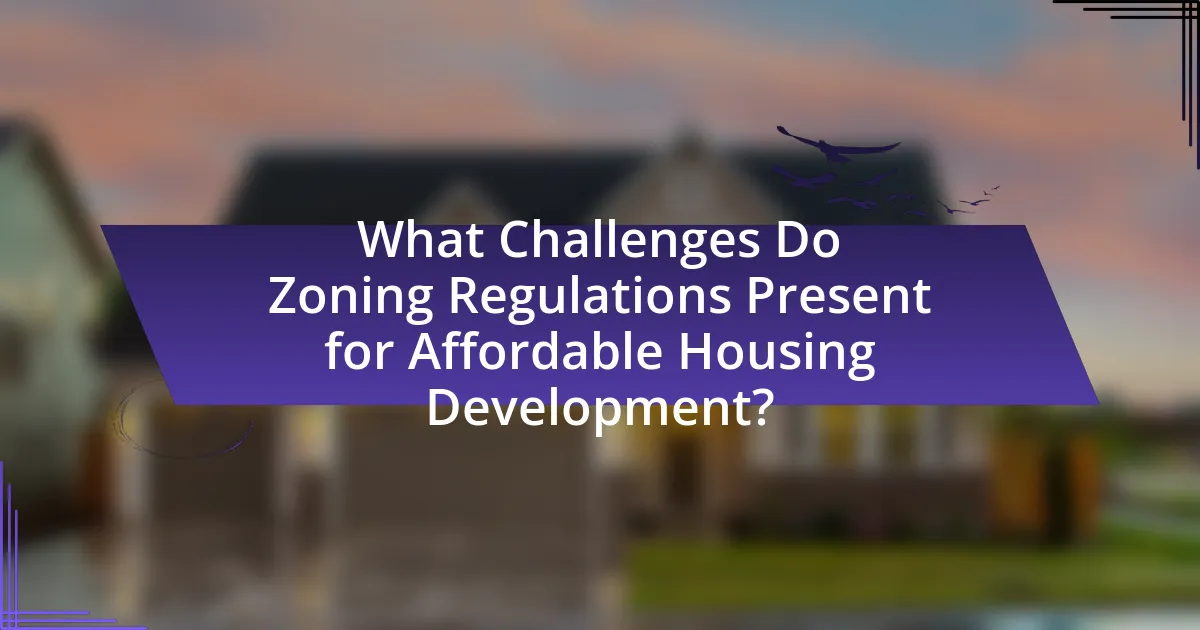
What Challenges Do Zoning Regulations Present for Affordable Housing Development?
Zoning regulations present significant challenges for affordable housing development by imposing restrictions that limit the density, type, and location of housing projects. These regulations often require minimum lot sizes and setback requirements, which can increase land costs and reduce the feasibility of developing affordable units. For instance, a study by the National Association of Home Builders found that restrictive zoning can add up to 30% to the cost of housing, making it less accessible for low-income families. Additionally, zoning laws may favor single-family homes over multi-family units, further constraining the supply of affordable housing options.
How can restrictive zoning laws hinder affordable housing initiatives?
Restrictive zoning laws hinder affordable housing initiatives by limiting the types of housing that can be built in certain areas, thereby reducing the overall supply of affordable units. For instance, zoning regulations that mandate single-family homes or prohibit multi-family dwellings restrict developers from creating diverse housing options that could accommodate lower-income families. According to a study by the National Low Income Housing Coalition, areas with stringent zoning laws often experience higher housing costs and lower availability of affordable housing, exacerbating the housing crisis. This correlation demonstrates that restrictive zoning directly impacts the feasibility of developing affordable housing projects, ultimately limiting access for those in need.
What are the common types of restrictive zoning practices?
Common types of restrictive zoning practices include single-family zoning, minimum lot size requirements, and density restrictions. Single-family zoning limits land use to only one housing unit per lot, which can reduce the availability of affordable housing options. Minimum lot size requirements mandate a specific size for residential lots, often leading to larger, more expensive homes and limiting the construction of smaller, affordable units. Density restrictions cap the number of housing units allowed per area, which can hinder the development of multi-family housing and exacerbate housing shortages. These practices collectively contribute to increased housing costs and reduced accessibility to affordable housing.
How do these practices disproportionately affect low-income communities?
Zoning regulations disproportionately affect low-income communities by limiting the availability of affordable housing options. These regulations often impose strict land-use restrictions, such as minimum lot sizes and prohibitions on multi-family housing, which can lead to a scarcity of affordable units in areas where low-income families reside. For instance, a study by the National Low Income Housing Coalition found that restrictive zoning laws contribute to a significant shortage of affordable housing, exacerbating homelessness and housing instability among low-income populations. Additionally, these practices can lead to increased property taxes and housing costs, further marginalizing low-income residents who may already struggle to afford basic necessities.
What are the potential solutions to overcome zoning-related challenges?
Potential solutions to overcome zoning-related challenges include implementing flexible zoning regulations, promoting mixed-use developments, and enhancing community engagement in the zoning process. Flexible zoning regulations allow for adaptive reuse of buildings and increased density, which can facilitate affordable housing development. Mixed-use developments combine residential, commercial, and recreational spaces, creating vibrant communities while addressing housing shortages. Enhanced community engagement ensures that local needs and concerns are considered, leading to more effective zoning policies that support affordable housing initiatives. These strategies have been shown to improve housing availability and affordability in various urban settings.
How can policy reforms improve zoning regulations for affordable housing?
Policy reforms can improve zoning regulations for affordable housing by increasing density allowances and reducing restrictive land-use policies. By allowing higher density developments, municipalities can facilitate the construction of more affordable units, addressing housing shortages. For instance, cities that have implemented inclusionary zoning policies, which require a percentage of new developments to be affordable, have seen a rise in affordable housing stock. A study by the Urban Institute found that cities with such policies experienced a 20% increase in affordable housing units over five years. Additionally, reforms that streamline the permitting process can reduce costs and time for developers, further incentivizing the creation of affordable housing.
What role do community advocacy groups play in changing zoning laws?
Community advocacy groups play a crucial role in changing zoning laws by mobilizing residents, raising awareness, and influencing policymakers. These groups often organize campaigns to highlight the need for zoning reforms that promote affordable housing, presenting data and testimonials to demonstrate community support. For instance, in cities like San Francisco, advocacy organizations have successfully lobbied for changes in zoning regulations to allow for higher-density housing, addressing the housing crisis. Their efforts can lead to public hearings, increased media attention, and ultimately, legislative changes that reflect community needs and priorities.
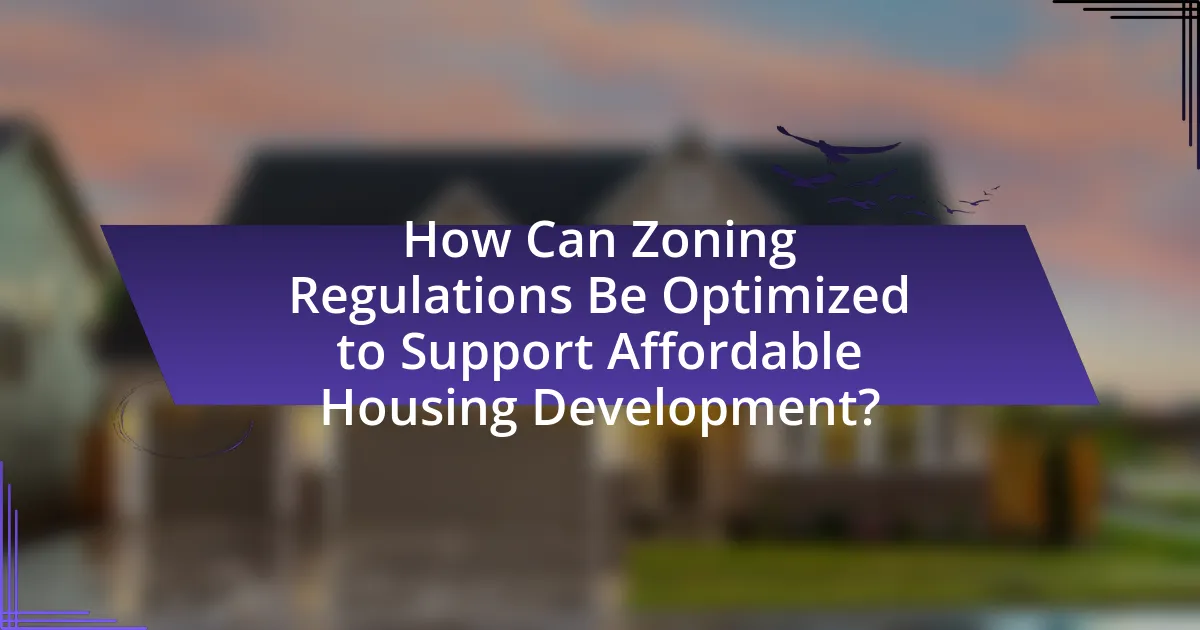
How Can Zoning Regulations Be Optimized to Support Affordable Housing Development?
Zoning regulations can be optimized to support affordable housing development by increasing density allowances, reducing minimum lot sizes, and streamlining the approval process. Increasing density allows for more housing units in a given area, which can lower costs per unit; for example, cities like Minneapolis have adopted policies to allow triplexes in single-family zones, significantly increasing housing availability. Reducing minimum lot sizes can enable smaller, more affordable homes to be built, as seen in various urban areas that have adjusted their zoning codes to permit smaller developments. Streamlining the approval process minimizes delays and costs associated with obtaining permits, which can be evidenced by jurisdictions that have implemented expedited review processes for affordable housing projects, resulting in faster construction timelines and reduced overall expenses.
What innovative zoning practices promote affordable housing?
Innovative zoning practices that promote affordable housing include inclusionary zoning, which mandates that a percentage of new developments be set aside for low- and moderate-income residents. This approach has been implemented in cities like San Francisco, where it has resulted in thousands of affordable units being created. Another practice is the use of density bonuses, allowing developers to build more units than normally permitted in exchange for including affordable housing. For instance, Los Angeles has adopted this strategy, leading to increased housing supply while addressing affordability. Additionally, form-based codes can streamline the approval process and encourage mixed-use developments, which can enhance affordability by integrating residential and commercial spaces. These practices collectively contribute to the creation of diverse and affordable housing options in urban areas.
How does inclusionary zoning work to create affordable units?
Inclusionary zoning creates affordable units by requiring developers to include a percentage of affordable housing in new residential projects. This policy incentivizes the construction of affordable units by offering benefits such as density bonuses, expedited permitting, or reduced fees, which make it financially viable for developers to incorporate lower-priced housing options. For example, cities like San Francisco and New York have implemented inclusionary zoning policies that mandate a specific percentage of units in new developments be affordable, resulting in thousands of affordable homes being built.
What are the benefits of mixed-use zoning in affordable housing development?
Mixed-use zoning in affordable housing development enhances community integration and economic viability. By allowing residential, commercial, and recreational spaces to coexist, mixed-use zoning promotes walkability, reducing reliance on cars and fostering a sense of community. This zoning approach can lead to increased property values and attract diverse businesses, which in turn creates job opportunities for residents. Studies indicate that mixed-use developments can improve social interactions and reduce crime rates, as active public spaces encourage community engagement. Furthermore, integrating affordable housing within mixed-use developments can ensure that low-income residents have access to essential services and amenities, thereby improving their quality of life.
How can local governments implement effective zoning strategies for affordable housing?
Local governments can implement effective zoning strategies for affordable housing by adopting inclusionary zoning policies that require a percentage of new developments to be affordable for low- and moderate-income households. This approach has been successfully utilized in cities like San Francisco, where inclusionary zoning has led to the creation of thousands of affordable units. Additionally, local governments can streamline the permitting process for affordable housing projects, reducing bureaucratic delays and costs, as evidenced by studies showing that expedited approvals can lower construction expenses by up to 20%. Furthermore, local governments can rezone underutilized land for higher-density development, which has been shown to increase the supply of affordable housing options in urban areas.
What best practices should local governments adopt in zoning regulations?
Local governments should adopt flexible zoning regulations that promote mixed-use development and affordable housing options. Implementing inclusionary zoning policies, which require a percentage of new developments to be affordable, can directly increase housing availability for low-income residents. Additionally, local governments should streamline the permitting process to reduce delays and costs associated with housing development, as evidenced by studies showing that lengthy approval times can significantly hinder construction. Furthermore, engaging with community stakeholders during the zoning process ensures that regulations reflect local needs and priorities, fostering public support and enhancing the effectiveness of zoning laws.
How can collaboration between stakeholders enhance zoning effectiveness?
Collaboration between stakeholders enhances zoning effectiveness by fostering comprehensive planning and aligning diverse interests. When local governments, developers, community organizations, and residents work together, they can create zoning regulations that reflect the needs and priorities of the community, leading to more effective land use. For instance, a study by the Lincoln Institute of Land Policy highlights that collaborative zoning processes can result in more equitable housing solutions, as they incorporate input from various stakeholders, ensuring that affordable housing is prioritized in zoning decisions. This collective approach not only improves the relevance of zoning regulations but also increases public support and compliance, ultimately leading to successful implementation and sustainable development outcomes.
What practical steps can communities take to advocate for better zoning regulations?
Communities can advocate for better zoning regulations by organizing public forums to discuss zoning issues and gather community input. Engaging residents in these discussions fosters a collective understanding of zoning impacts on affordable housing. Additionally, communities can form coalitions with local organizations and stakeholders to amplify their voices and present unified proposals to local government. Research shows that community engagement in zoning processes can lead to more equitable outcomes, as seen in cities like Minneapolis, which adopted policies to increase affordable housing through inclusive zoning practices. Furthermore, communities can utilize petitions to demonstrate public support for specific zoning changes, thereby influencing local policymakers.
